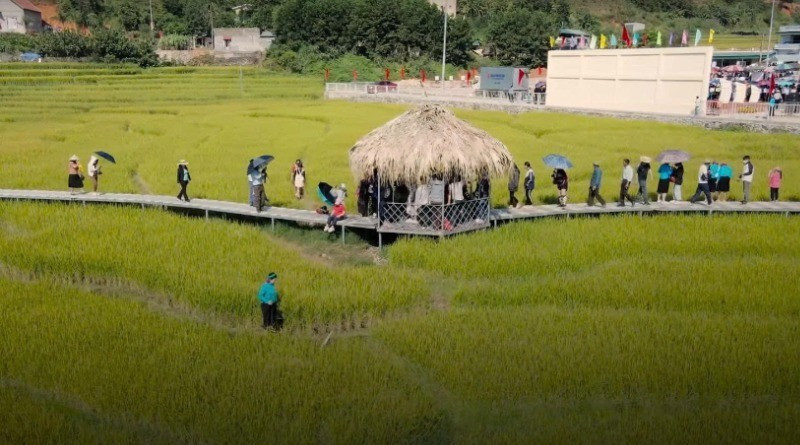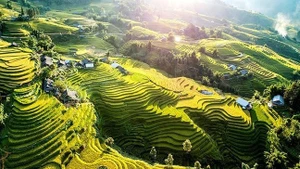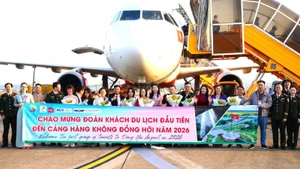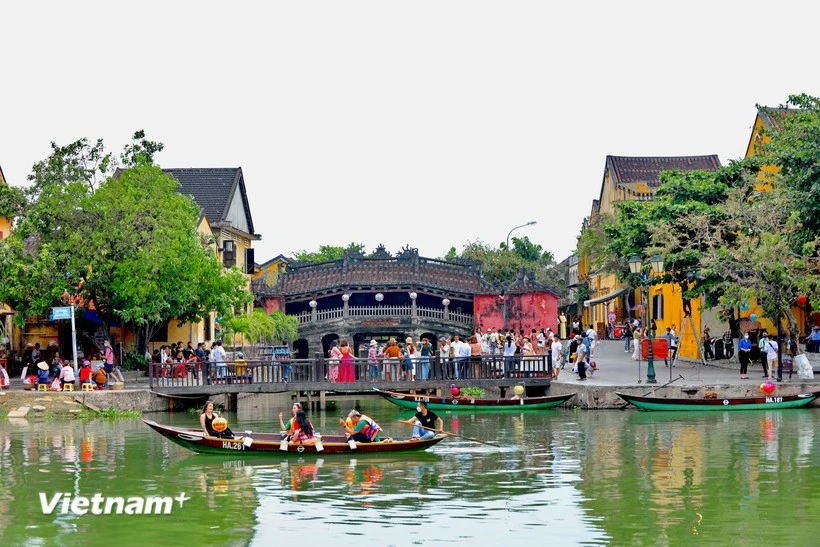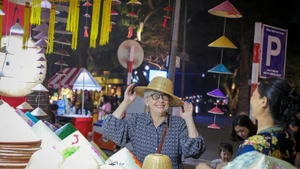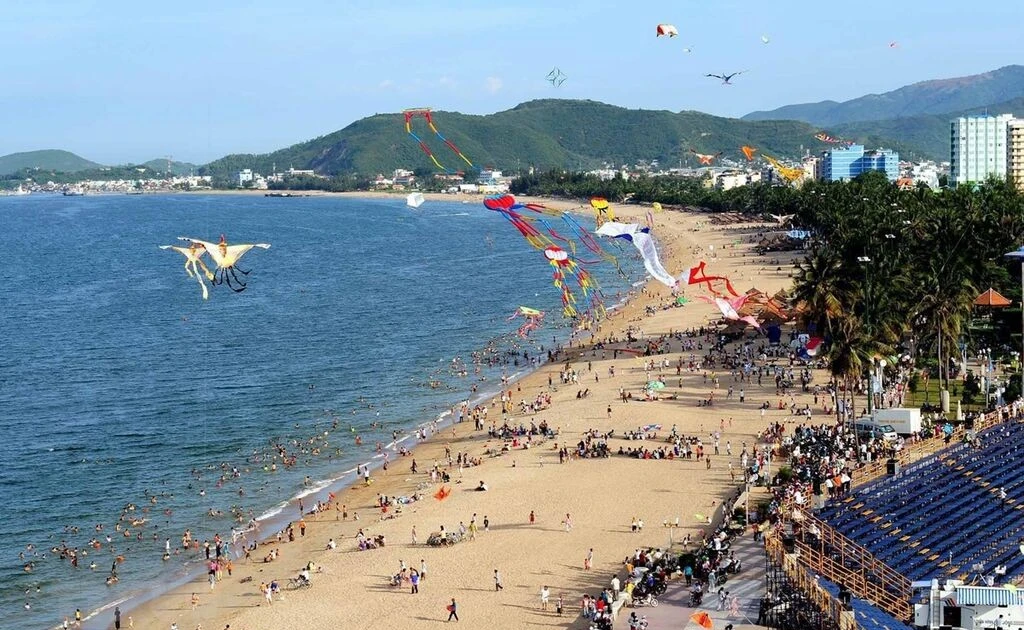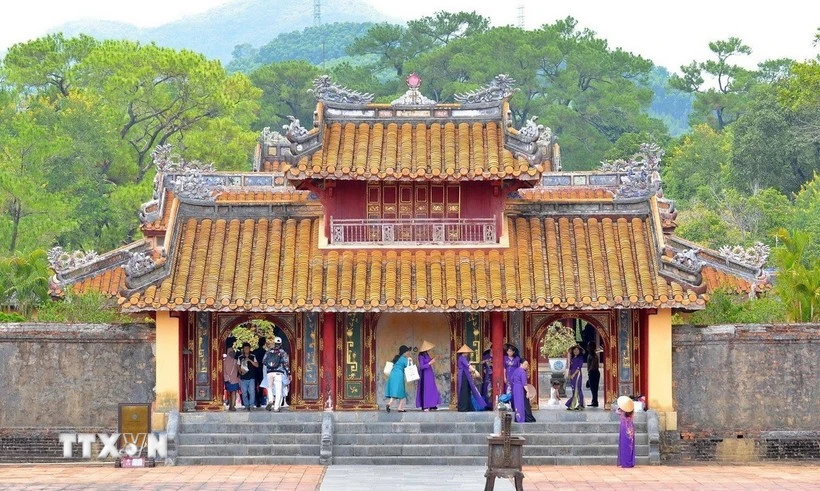Thanks to tourism development, infrastructure has been significantly improved, people's livelihoods enhanced, and many aspects of indigenous culture have been restored and preserved. These developments have become powerful catalysts helping rural areas transform and move steadily towards achieving the goals of sustainable new-style rural development.
Tam Duong, a mountainous district in Lai Chau province, is home to 12 ethnic groups. From high mountain peaks to distant villages, the vibrant cultural diversity of the H’Mong, Thai, Dao, Lao, Lu, Giay, and others – together with the majestic natural scenery – provides immense potential and advantages for community-based tourism.
Recognising local strengths, the Resolution of the 2020–2025 Party Congress of Tam Duong district identifies “Tourism development linked to preserving and promoting ethnic cultural identities” as one of the key programmes. It also affirms that new-style rural building and tourism development are political priorities requiring focused efforts. Nearly five years into implementation, visitors to Tam Duong can now immerse themselves in nature at popular destinations such as Cau May Waterfall, Tien Son Cave, Tac Tinh Waterfall, Rong May Glass Bridge, and Mount Putaleng, or explore the unique cultures of local ethnic groups in tourism villages like Lao Chai 1, Si Thau Chai, Ban Hon, Phieng Tien, and Na Khuong.
Notably, once a disadvantaged district, Tam Duong has achieved a poverty reduction rate of approximately 5% per year. In 2022, the district had 3,388 poor households, accounting for 27.1%, but by 2024 this figure had fallen to just over 12%, with average income reaching 46 million VND per person per year.
Sharing insights on this positive change, Sung Lu Pao, Chairman of the Tam Duong District People’s Committee, said: “We prioritise integrating various resources into new-style rural building and tourism development. Once the tourism zoning was defined, we established mechanisms and conditions for businesses to conduct surveys and invest, while continuing to preserve distinctive ethnic cultural identities. As a result, Tam Duong now has two community-based tourism villages – Si Thau Chai and Lao Chai 1 – recognised as 3-star OCOP tourism products.”
Situated at about 1,500 metres above sea level, the road to Si Thau Chai village (Ho Thau commune, Tam Duong district) winds like a silk ribbon through the mountainous landscape. Si Thau Chai currently has around 15 households offering homestays and welcomes over 12,000 visitors each year.
Recalling the early difficult days, Ly A Gon – one of the pioneers of community-based tourism in Si Thau Chai – shared: “In the past, we lived mostly by farming under very tough conditions. The road to the village was steep and winding. During the rainy season, it became slippery and dangerous.”
In 2017, following the policy of building a community-based tourism village linked with new rural development, residents rallied together to donate thousands of square metres of land and labour to construct inter-village roads. The most challenging and painstaking efforts included clearing and surveying the route to conquer Mount Putaleng, opening access to the top of Tac Tinh Waterfall, preparing a paragliding launch site, and building more than two kilometres of stone fences.
It is evident that linking tourism with new rural development has transformed mindsets and awareness among many locals. In addition to environmental protection and improving scenic landscapes, villagers have revived traditional crafts and expanded the local economy through models such as growing orchids, hawthorn, pear, and plum gardens to meet tourists' demand. As a result, living standards have improved, with average per capita income reaching 45 million VND per year. In 2019, Ho Thau became one of the first communes in Tam Duong to complete the new-style rural development targets.
In many mountainous localities, combining community-based tourism development and new-style rural building has yielded positive results. Key criteria implemented simultaneously include infrastructure development (electricity, roads, schools, health stations, cultural houses, playgrounds for children and the elderly), improving green-clean-beautiful environmental landscapes, preserving and promoting cultural identities, and – most importantly – creating jobs and increasing incomes for locals.
Tien Yen is a mountainous district in Quang Ninh province, where over 50% of the population belongs to ethnic minorities. Four of its communes and 18 villages are classified as extremely disadvantaged. At the start of its new rural development journey, the district met only 2 out of 19 required criteria, infrastructure was severely lacking, the poverty rate stood at 11.9%, and average income per capita was just 18 million VND per year.
With strong determination to rise, alongside models of farming and animal husbandry, Tien Yen has made breakthroughs in community-based tourism by tapping into its rich natural scenery and the diverse cultures of 17 ethnic groups living in the area.
According to Pham Van Hoai, Vice Chairman of the Tien Yen District People's Committee: “To effectively develop tourism and trade, we prioritised transport infrastructure. We focused on key routes such as the 11 km concrete road connecting Dai Duc and Phong Du communes, and another linking National Highway 18C with Dai Duc, Dai Thanh, and Phong Du. These efforts have created momentum for socio-economic development and helped achieve new-style rural development targets in remote communes.”
Following the principle that “New-style rural development is a journey with a starting point but no endpoint,” Tien Yen has launched practical emulation movements in its villages over the years. These have inspired meaningful actions such as donating land for road construction, participating in building public infrastructure, planting trees, and protecting the environment. Notably, the “Flower Roads – Wall Murals – Bright-Green-Clean-Beautiful Landscapes” initiative has been maintained since 2020. Over 29 km of flower roads and 12,300 m² of wall murals have given Tien Yen a vibrant new look, attracting many tourists to stop and take photos.
Alongside infrastructure development, Tien Yen also focuses on improving the spiritual and cultural life of residents by reviving traditional festivals. Visitors can join the traditional boat racing festival in Dong Rui during National Day (September 2) or explore the cultural richness of festivals celebrated by the Dao, San Chi, San Diu, and Tay communities. Eco-tourism areas such as Pac Sui Waterfall, the Tay Cultural Village in Dong Dinh hamlet, and the mangrove forest tourism site generated 72 billion VND in revenue for the district in 2023.
Thanks to these achievements, in 2023, Tien Yen became one of only two districts in Quang Ninh to meet the criteria for advanced new rural development and is now working towards becoming a model rural district.
Integrating community-based tourism with new rural development is clearly the right direction to help “awaken” many rural areas. However, for sustainable development, there must be close coordination among local authorities, residents, and businesses in planning, infrastructure investment, human resource training, and preservation of cultural identity. Only when the community truly becomes the driving force behind tourism can this model realise its full potential and serve as a foundation for comprehensive and sustainable rural transformation.
